DecemberList of articles
0 Comments
by Rev. Michaël Merle In Chapter 21 of The Revelation to John (The Book of the Apocalypse: Revelation) we read part of the description of the New Jerusalem, a picture of a mighty vision experienced by John in the Spiritual World: “The city has a great and high wall and twelve gates. And on the gates twelve angels, and names were written on them: the names of the twelve tribes of the sons of Israel.” (verse 12)
This year we hope to uncover an understanding of the twelve ways in which we can enter the New Jerusalem. The way of Benjamin The description of Benjamin in Genesis is that he is a ravenous wolf: In the morning he devours the prey, and in the evening he divides the spoil. This may seem a rather aggressive description for the last born of Jacob’s (Israel’s) sons. It has been understood that this description captures Benjamin’s hunger for the Divine spark in all of existence. So, like a ravenous wolf he recognizes that his mission is to passionately seek the Divine energy embedded in matter, devour it, consume and elevate it. Benjamin may also be depicted by a picture of the Temple. The area of the Temple belonged to all the tribes but in a geographic sense it was in the area of Benjamin (Jerusalem is in the land of Benjamin), falling into the larger lands of the Kingdom of Judah. The connection of the Temple, of Benjamin, with Judah, reminds us of the connection of Jesus as a son of Judah, and the body that bore the Christ as the builder of the new Temple of the inner life. Twelve tribes and twelve paths: each a gateway into the New Jerusalem. Each one a way into the relationship with the new Temple builder: Christ. by John-Peter Gernaat The Gospel Study continued the study of John’s Gospel beginning at the fourth sign: the Feeding of the Five Thousand, immediately followed by the fifth sign. Although the group had discussed these in October in the absence of Rev. Michaël Merle, the group wished for his input to these signs.
The Feeding of the Five Thousand is related to the Sacrament of Communion, the Eucharist. The two fish represent Pisces, the sign into which the axis of the earth has been pointing from shortly before the birth of Jesus until now. The sign of the zodiac directly opposite Pisces is Virgo which is represented by the sheaf of domesticated grain which make the five loaves of bread. This points to a relationship between the bread and the one who blesses the bread. It connects Christ (Pisces) with the bread (Virgo). The bread is the result of the human being taming and transforming nature to make a new substance. This is the new sacrifice. What the disciples gather up is that which is ‘over and above’ what was needed to feed the people. This over-abundance is carried by the full span of the community. It is the substance from which Community can grow. The five thousand is the full volume of the community of the human being. The fifth sign is the sign of the etheric force of Christ that walks on the water. The fifth sign is the sacrament of the one who can ‘take the boat to the other side’. It is the Sacrament of Ordination. Though ordination the spiritual world is opened up for others. Crossing a threshold is difficult. It is with the ‘I’ in me that I can overcome the fear of the world. The ‘I am’ is related to priesthood. These signs are followed by the first of the ‘I am’ statements of the Christ. The seven ‘I am’ statements are related to the seven-fold human being. The first: “I am the Bread of Live” relates to our physical body and what it is to be in a physical body as a spiritual being living an earthly life. Jesus accuses the people who question him that they are looking for signs but that they are not recognising the signs that he has given to them. They are unable to connect the signs to a spiritual reality. If they see only the outer sign and miss the spiritual reality that the sign reveals, they are missing the purpose of what they have witnessed. It is this that causes the tension that we read in the verses between the first and second ‘I am’ statements. Jesus has arrived as the ‘Anointed One’ but this is not obvious in the outer world and therefore many cannot see this reality as it differs from their expectations. The greatest deed of Christ is not witnessed by anyone. After His death there are witnesses to Him being placed in the tomb. After His Resurrection there are witnesses to Him being alive, but there are no witnesses to the event of His Resurrection. His Resurrection is not just an act of overcoming death, it is the overcoming of death so that there is new life. The Resurrection brings something new to the human being. The Buddha saw as the ultimate aim the release from death (the release from the cycles of rebirth), whereas Christ takes this aim of the Buddha a step further, that beyond death there is life, not just release and a return to the essential oneness of existence; there is a future. by John-Peter Gernaat This discussion group is permitting the members to explore what it means to be a human being where the experiences of the world around us taken into our soul through our physical nature meet the spiritual experiences that enter the soul through our I-constitution. Spiritual well-being is the recognition of the input we receive as imagination, intuition and inspiration from our spiritual nature to use in our soul to understand the experiences that come to us from the physical and formative life forces of the world around us.
In his book Theosophy Rudolf Steiner belabours the point that as human beings we belong to one species. There are no different species of human being, we are all one. We inherit physical and also non-physical characteristics through heredity from the family, culture and ethnicity into which we are born. But as spiritual beings we are unique and a species unto ourselves; a species that recurs on earth time and time again in a different physical body but that has potentialities and characteristics that are unique to itself completely. This makes the human being an interesting meeting place of that which we can identify as being inherited and that which we recognise as being entirely unique to us. Therefore, spiritual well-being also is about our response to the world around us and the development of the unique potentialities that we bring into this life with us. by John-Peter Gernaat Sacrament means the development of a relationship to the Divine. The theology of the Act of Consecration began by considering the first words of the celebrant before stepping up to the altar. In these words we learn something of the nature of the Divine Trinity and the relationship we can develop with each of these aspects of the Divine.
Then we looked at the Trinity Epistle which describes in great detail the nature of the Divine Trinity. Now we are looking more closely at the Advent Epistle. Advent is the first of the three liturgical festivals of the Father that describe the expectation of something coming to earth; the birth of something on earth; and the revealing of this something in the being of a human being. For a while we will deepen our understanding of the Father, the nature of the Father and our relationship to the Father as the Ground of the World and the One who sends the Son. Africa Seminary Module 4 of 2023 on the theme Cultivating a relationship to the Etheric Christ with this module reflecting on The Way of Communion in and with Christby John-Peter Gernaat We learn that we can only come into a relationship with the Divine through a true understanding of the human being. Rudolf Steiner explains that the human being is created in the image of the Divine and therefore to understand the Wisdom of the Divine (Theosophy) we should come to understand the human being. In this module the theme was communion or common union. Our relationship to the Etheric Christ is in community or common unity through communication or common unification. We developed a picture of the human being at hand of Form and Movement. Through our threefold and fourfold nature as human beings we recognise the working of the second and first Hierarchies in our development and creation. The activities of the Saturday allowed us to work with the prayers that are said during the Communion part of the Act of Consecration of the Human Being. We worked by comparing the prayer as was previous prayed and as it has been renewed in our sacrament through image, written words, speaking an intuition that arose, and finally by reflecting in community. The coming of Christ has brought about a major change in the human being. That which was outside has come to be inside of us. We can become aware that the Beings of Form that created this Heaven and this Earth as the servants of the Divine, are handing over the creative impulse to the Archai, the Spirits of Personality. We can no longer rely on outer forms to sustain us, individually or communally. It is now our inner activity that gives the form to our lives and through our inner activity we commune with Christ and through inner activity we form community with others. The form in the outer world has moved to the inner activity of movement within the human being. The full reportReport by John-Peter Gernaat This module is a consideration of our relationship with the Etheric Christ in Communion, in Communion with Christ, and in Communion in Christ, and one can add, in Communion through Christ. This is a Communion with the Etheric Christ in Him, with Him and through Him. The word communion may be viewed as ‘comm-union’. One can express this as two words: common union. There are two other words that we may consider: community – very similar to communion – that may be expressed as ‘comm-unity’ that may also be split into two words as common unity. The third word is communication. This is a word that we will engage with throughout this module. The word communication may be split into common unification. The word ‘common’ is common to all the word pairs above. The word has three main meanings and three lesser meanings. The original word from Latin is no longer the main meaning of the word in English. The main meaning in English is “something that is frequently occurring”. It means something that is regular, widespread, ordinary and prevalent. An example would be to speak of a ‘common sparrow’. This means that the sparrow is widespread and that it is ordinary, thereby lacking any specific identification, and it frequently occurs. We can have the same expression for the ‘common people’. We are all the ‘common people’ because we can be considered as ordinary, and there are people like us spread throughout the community and throughout the world, we appear fairly regular in our activities and we are prevalent, we are here a lot, and we occur all over. Because we do not have a high rank in society we would come together as the common folk and in England when the person in the street was given the opportunity to represent their own kind of people and they gathered in a parliament, they gathered in a House of the Common People, the House of Commons. Shakespeare uses the word in that meaning: “are you common, base and popular?” (Henry V). Another meaning of ‘common’, more closely related to the meaning in Latin, is that it is something that is shared, something that is collective, something that is communal. An example would be ‘common land’ because it is held by all in common with each other, shared by all. Another is ‘common law’ because it is shared by everyone and applied to every one of every rank. We also use this word in how we relate to the other; meaning that I share a particular quality with another, the quality may be decency, and so we speak of ‘common decency’. It is a quality that is common to many people in our circle or community. Everyone in the circle or community shares in the quality of decency. We can speak of a ‘common name’, a name that is shared by many, such as John is a common English name. A very different meaning for common is that it can be vulgar, uncouth, and unrefined: “what a common thing to say!” In law the word common is placed before another word to mean less severe, such as ‘common assault’ which is less severe than an ‘assault’. The Latin word from which ‘common’ is derived is ‘cummunis’, meaning ‘shared by all’. Now we may consider the words ‘union’, ‘unity’ and ‘unification’ that all derive from the Latin ‘ūnus’ meaning ‘one’, or ‘unitas’ when applied as a description. In the word ‘unification’ there is also the Latin word ‘facere’ which is ‘to make one’. Thus, if we reflect on the Latin etymology for the word communion, we come to: ‘the one thing that is shared by all’: one belonging to all. The Latin etymology of communication would be ‘making one of what is common’. There is effort involved. Communion is something that exists and is common to all while communication requires effort. Communication is something that is common to all people, we do it all the time, even when we are not speaking. We communicate in gestures and also in ways of which we are unaware. How was the human being designed to communicate in the creation plan of the Divine? The first thing to notice about human beings is that we have form, a structured form. The structured form requires a force or energy to express life; a formative force that moves the form, therefore: a formative force expressed in movement. Life requires movement, movement of air and fluids and digestion. Our communication requires meaning or intention to the movement; breathing has intention and the movement of our body during communication has intention. In order to be human we need mastery over our intentions. This is mastery based on conscious intention over the intention or meaning in our movement: mastery over self. This becomes important in our communication as there is a big difference between reacting and responding. Most communication is reactive, which starts with our inborn reflexes. Our ability of mastery over the reaction and to hold ourselves in order to respond, is the characteristic of being human. In identifying the elements that are in the design of the human being for communication there is the four-fold human being: the physical, the etheric, the astral and the ‘I’-organisation. Our structured form is our physical; formative force expressed in movement is our etheric; our meaning and intention is expressed in our astral; and mastery can be seen in the ‘I’-organisation. Rudolf Steiner, in one of his lectures, summarised this into the three-fold human being, body, soul and spirit using the words ‘form’ for Body, formative force expressed in movement as ‘Life’, and meaning and intention that is properly mastered as ‘Consciousness’. He spoke of Form, Life and Consciousness as another way of speaking about Body, Soul and Spirit. Our living body is a form when it is inhabited by the etheric. Our soul-life, the life of the soul; this is where we live in our thinking, feeling and willing, in the inner life of the soul. Consciousness is our spirit. This is where we are conscious that we are human, and not just reactive. This is where the reactive soul life is turned into the response of the soul. The Angelic Hierarchies have been active participants in this process of building the human being as a structured form, a formative force expressed in movement, a form that has meaning and intention, and a form that has mastery. Rudolf Steiner describes the Angelic Beings we refer to as the Elohim or Exusiai as Beings of Form, they give us structured form. When we look at the structure of the Angelic World, the nine hierarchies of Angelic Beings, three form the First Hierarchy, three form the Second Hierarchy and three form the Third Hierarchy. The Third Hierarchy is the Hierarchy we know well, we work with them. Rudolf Steiner gives a picture of the Angels as standing behind each human being resting their hands over the head of the human. He described the Angels as giving strength to the human being. Steiner speaks of the Circling Archangels who are in communication with each other. The communication of the Archangels brings courage to the work done by the human being. Then there is the Archai of the time (at this time it is Michael) who brings a drop of light that he drops into the crucible or chalice of the Archangelic movement so that they can capture the light and warm it with courage, and this provides the strength that the Angels can draw on for the human being to do his or her work. The human being can then work as a being of strong, courageous light. This picture was provided in the context of Waldorf education and is described as the College of Teachers Imagination. The Beings who were forming the human being out of the design of the Divine are the Second Hierarchy. The Exusiai are the lowest rank of the Second Hierarchy. The next rank are the Dynamis or Beings of Movement. The highest rank of the Second Hierarchy are the Kyriotetes, also known as the Lords or Dominions. The Kyriotetes are the Lords and have charge over themselves, mastery; they have the capacity to bring about their intention. Our formative force expressed in movement comes to us from the Dynamis, the Spirits of Movement. When Rudolf Steiner was asked to give a name to the renewal of religious life formed as The Christian Community, he said that this was a Movement. We are not just a form, there has to be life in the community; we are a formative force expressed in movement. The Spirits of Wisdom, the Kyriotetes, give us intention. A valuable concept to hold in mind when addressing the ‘I’ is that our ‘I’ is connected to our higher ‘I’ and that our higher ‘I’ is connected to the Christ ‘I’. This means that the Trinity has something to do with the forming of the ‘I’. The Christ ‘I’ comes from the heart of the Trinity, from the Son God. The ‘I’ is endowed with characteristics that come from the First Hierarchy. The way that Rudolf Steiner describes the Beings of the First Hierarchy tells us about the way in which the ‘I’ needs to set about doing its work. The ‘I’, one could say, is the first part of the human being that was imagined in creation at a time when the Spirits of Form were still in the earlier part of their development. This was the time when the Thrones were the principal agents of the creative work of the Divine. It is the period that is referred to as Old Saturn. Steiner refers to the Thrones as the Spirits of Will. The ‘I’ must have a capacity to exercise a quality of will in its activity. Rudolf Steiner refers to the Cherubim as the Spirits of Harmony or Balance and the Seraphim as the Spirits of Love. The characteristics of our ‘I’ are therefore: will, balance and love. Our earthly ‘I’ has to tap into these characteristics that lives in our higher ‘I’, so that the higher ‘I’ can, like the First Hierarchy, be ever present to the Christ ‘I’. In chapter 4 of the Book of Revelation John enters the Throne Room of Heaven and at first sees only the centre and slowly his vision widens as he sees more and more of what is around the central Throne of God. His first description is of the First Hierarchy around the Throne of God. The Seraphim and Cherubim were not involved in all the activity; the Thrones were involved, and the Spirits of Second Hierarchy have all been involved in the various aspects of world building and the shaping of the human being. Harmony and Love remained around the Throne of God. In this description we have the qualities of the First Hierarchy that makes it possible for our earthly ‘I’ to become the master of our intention, our movement, our vital force and our structured form. We now have a picture of the human being because it is a picture of the human being that can communicate in this way. This way is different to the way that animals communicate. Animals cannot develop the complexity of language that we can develop. We create the sound form to which we add gestures. The development of language is very specific to being human, and language is much more than what we say and how we say it, it is who we are in the saying. We become human when we master a language, because it expresses our being human. It allows our humanity to be recognised. It can also be extremely destructive. Our words have enormous power. The words we speak and write can uplift the human spirit and can equally be extremely destructive. The way we form our letters in our handwriting is a form of communication, it reflects how we inscribe ourselves into the world. This all has something to do with Communication. This idea will be used further in this module in order to come to terms with what is happening in Communion, the fourth part of our eucharist service, the Act of Consecration of the Human Being. What does this fourth part communicate to us. What do we hear, what can we experience, and how can we respond in communication to what comes to us. It is in the Communion that we are asked to take our most responsive action in the service; our response to choose to stand up and to walk and receive Communion. We receive the consecrated bread and the consecrated wine and the sign of peace. We are asked to respond. The outer response cannot happen with any true meaning and intention without an inner response. During the next sessions the participants worked on their inner responses. There must be something that comes and leads up to the outer response that should be working in person sitting in the congregation. This will take the form of a journey for the form that was created and how it is renewed in our sacrament. Saturday exercises In the opening question session Michaël reiterated that there should be something of all the Hierarchies in the human being. There is love, and harmony, and will, and wisdom, and movement, and form and we should be in relationship to light that comes from the Archai, the courage that comes to us from the Archangels, and the strength that comes to us from the Angels. The task of human beings is to take these qualities a step further. It is not an accident that the opening talk of every Africa Seminary presents a picture of the human being. Each time this picture is presented in a different way. Presenting this picture in these different views helps us to grasp how it is that we are a fourfold human being. In the image of yesterday we are introduced to a new word expression for body, soul and spirit: form, life and consciousness. There is value in holding in mind that in the next great cycle of creative activity the Archai will be the Hierarchy of Beings driving the design of the Divine and acting as the creative agents of the Divine. The Archai are known as the Spirits of Personality. In the Fifth Post Atlantean Epoch the creative spirits of the Earth cycle of creative activity, the Elohim or Exusiai, have completed their work and are receding, making way for the Archai to prepare the seed with which their activity can begin. What is happening, as a result, is that the form is no longer holding us as strongly as it did before and has moving from outer structure to inner structure. We now must learn to hold the form in our inner life. The more that our own personal strength can be developed by the Archai, the more we have the capacity to discern and stand in opposition to the fallen Archai, the ones that will remove from us those areas of our soul where we remain unconscious. Their working is very subtle but much more destructive and is happening now.
The activities of Saturday were to focus on Communion. In order to do this it was important to hear the words. It is necessary to understand that the ritual words of the renewed sacrament are not available to be read. Therefore, it will not be possible to present the words here in this report. In engaging with the work that was asked to accompany the words something remained for the participants to take forward. The perspective for these exercises was to understand how the prayers that are said in the Act of Consecration of the Human Being have been renewed. Therefore, the words of the original eucharist were compared using the Catholic Mass (the Western Christian tradition). The first exercise was to listen to the first prayer heard during the Communion after the Lord’s Prayer in the Catholic Mass and then in The Act of Consecration of The Human Being in which we understand the peace that Christ left with us, and then to draw a form in a single colour inspired by the original prayer and a second form (in a second single colour) inspired by the renewed prayer. The comparison of the two forms from each participant were very insightful. The second exercise was to listen to the second prayer about what the body and blood of Christ does in us and to write descriptive words and to extract renewed ideas. What was very interesting was to compare the movement that has taken place from the original prayer to the renewed prayer. The renewed prayer is more direct, personal, asking us to take responsibility and has moved from past tense to present tense. The third exercise was to work with the words of the third prayer that expresses the necessity for healing and to speak out an intuition that arose as a result of hearing the renewal of the prayer. The final exercise was to reflect together in a communal gathering on a sentence spoken after the priest’s communion to consider the shift to the renewed words. We came to realise that the sacraments are an outer sign of an inner grace that is made available to those who choose to work with it. This grace is present but is never imposed. We recognise that the Christ in me is the healing medicine that the Communion offers. What opens up in the Communion is: the Christ in me and my capacity to take this on and to transform me. This is a shift from the Lord working on us to Christ being in us. Concluding presentation on Sunday Friday evening began with the development of a picture of the human being at hand of two concepts: form and movement. We have a structured form – our physical body. There is more to us, a formative force, a force that enlivens the form and brings it into movement. Our words, movements and gestures can be done with intention. We also have the capacity to be master of it all, to have mastery over our intentions, our movements and our structured form. This builds up the four-fold human being and also the three-fold human being: form, life and consciousness – body, soul and spirit. The ability to be master of ourselves is the key to being human in the Consciousness Soul Age. It is through mastery that we can develop traits like dignity, integrity, compassion, an interest in the other and a clear sense of self. That picture helped us to penetrate the form of the words of the original sacrament at the time of Communion, the original words of the Mass. We used these words to discover what is now expressed in the renewed sacrament of the Act of Consecration of the Human Being. This was an exercise in discovering what has moved from the original to where we are now. We discovered the following:
The movement is very much in the direction of being a conscious ‘I’; being able to take hold of ourselves in full consciousness, wide awake. Much of what disturbs us is when we are not consciously awake to ourselves. This happens for every human being. The importance of being consciously awake is very important to building the community. In this there is a key idea: from external to internal. Here Michaël shared something that he would share in more detail in a presentation on the Early Gothic architectural style exemplified in the cathedrals of Salisbury and Wells. The French Gothic style, which originated in France, broke with the Romanesque style, which means going from a reasonably low-ceilinged building to the extraordinary height of the walls. These walls required support, and this is found in the arching that is seen in French Gothic cathedrals supporting the walls externally to the cathedrals. These are called flying buttresses. They allow a great height, but introduced a limitation in width and mostly a limitation in the length that could be achieved in this Gothic style. This style spread from northern France to southern France and across the Holy Roman Empire. When this style reached England, a new architectural style emerged without flying buttresses. The stone masons and architects managed to support the height of the walls internally rather than externally. The support was built into the design obviating the need for flying buttresses. This building style allowed for length and breadth to the building that brought them into balance with the height that could be achieved. The picture is that one can reach one’s height by being externally formed or one can build one’s height and breadth and depth of being with an internal structure. This is exactly what it means to be in a relationship with the living Christ now. What is our Communion – our common union, our shared oneness – with Christ? It is no longer a shared oneness in which Christ is with us, it is a shared oneness in which Christ is with us, in us and works through us. We are moving from “The Lord be with you”, to “Christ in you”. We are taking the movement from having the external forming of the Elohim, the Exusiai (the Spirits of Form), to working on our internal structure so that the form can operate. This is at hand of the Elohim slowly withdrawing from the creative work of the Divine and making space for the Archai, the Spirits of Personality, to work on forming the seed for the next great cycle of creative work on behalf of the Divine. This takes the picture forward. The Spirits of Will, the Thrones, the lowest rank of the First Hierarchy of Angels, handed over the creative work to the highest rank of the Second Hierarchy, the Spirits of Wisdom, the Kyriotetes or Dominions, who gave to creation meaning, purpose and intention. They handed over to the Dynamis, the Spirits of Movement, who brought the etheric living, moving aspect to the human being. They handed over to the Spirits of Form who have endowed the human being with the possibility of being active on the earth through our ability to interact with our environment through the form of our physical body. We express ourselves to the world through our physical form in movement, whether this is through word or gesture or activity. We see in this how the human being has been built up, and now the development is moving on to Archai, the Spirits of Personality, and we now have to take a personal responsibility for our internal structures. We are no longer in an age where we can act because of an external instruction, we need to learn to act from a personal and considered choice. We must take the external information and process it with discernment and chose our own course of action from our internal, moral structure. This also adds to our role the possibility to accompany others in their taking responsibility for their own decisions. We can witness for others their actions. Our own higher self is always a witness to our action. This is where the relationship to the living Christ comes in, when we are in Communion with Him, in a shared oneness (comm-union giving us ‘common union’ or ‘shared oneness’) because He is not just with us, He is in us. The union with Christ has moved, to use a metaphor, from being a flying buttress to being internal within our structure. We have to recognise His presence to be able to build our height, to continue the metaphor. We can limit our height, but we have the internal scaffolding that we can take hold of in order to build our greatest height. This is key in the Act of Consecration where we speak, before the Communion, of the Transubstantiation being a process that works “in us and through us”. It is in us so that we can open our doors, so that what is in us can pour out into the world. We take something of what happens in the internal space through The Act of Consecration of The Human Being and take it out with us into the world. The activity of what is in us must become the activity of our surrounding community. The life of Christ in us is not just for us, it is for the world and must work through us. Gerard Manley Hopkins expresses it in the words: “Christ is lovely in limbs not His, to the Father through the features of human faces”. We are the limbs for Christ. We carry Christ in us. Christ is present and alive in the Act of Consecration of the Human Being in four ways. He is present and alive in the Gospel, he is present and alive in the Transubstantiated bread and wine that have become his Body and Blood, but Christ is not only present and alive in Word and Sacrament, He is also present and alive in the person of the priest and in the persons who congregate in the community. Eight times the Angelic World speaks through the priest and says: “Christ in you”. The Word and Sacrament come to an end (we do not preserve Communion), but Christ remains present in the priest and the community. The Sacrament of Communion helps us to re-enliven our connection to our ‘internal buttressing’. We are designed as an ‘English Gothic cathedral’. Our relationship to Christ is that He is active in us and through us. The relationship is not out there, it is in us. The relationship that we have to Christ out there is to the Christ in the other out there. It is to the other that the relationship comes. When “Christ is lovely in limbs not His” He is not only “lovely” in my limbs but also in the limbs of the other, but only when my limbs are in His service. We can also operate in a way that is not out of Christ. We can operate out of our selfishness, our greed, etc. When we act out of compassion, truth, care, freedom, dignity, honour, respect we act out of qualities that are the qualities of the Divine and they are ours only because we are made in the image of the Divine. They are ours by Grace. We can rise above the limitation of ourselves and build height and length and breadth. Our whole way of being can be expansive. We looked at this in the Act of Consecration when we go from a very broad view to a very precise view, but also, we find in our ritual words of Communion, when we expand our understanding to incorporate the precise detail, an ability to see the whole picture, not in general but in a real specific sense of the expansive whole. It is these words: ‘in, ‘with’, ‘through’; in Christ, with Christ, through Christ. We can reorder them: with Christ, in Christ, through Christ. It is important to feel that He is with us in the way that He is in us and in the way, because He is with us and in us, that He can work through us. This is why there is still a human being at the altar; because it takes a human being to act, to do the gestures and to speak the words. Our picture has not yet been fully realised where we become the sacrament. The picture of the priest at the altar is not just acting, but acting beyond, reminding us that we can aspire to act beyond – acting into our becoming. We can easily fall, fall back into what we have been. It requires work to build the wall that is properly buttressed and requires an architectural design. We are now co-creators in our design because we have been given the form and now we have to transform (trans-form) the form. We are not alone, we do this with Christ, but the work is ours to do. We can say that we rely on Christ in us to help us, but we must do it. This module has been presented to show us how we must build ourselves up from the inside when we are in relationship to Christ in us. Early Gothic architecture expressed in the cathedrals of Salisbury and Wells as the dawning light before the sunrise of the Consciousness Soul by Rev. Michaël MerleReport by John-Peter Gernaat This presentation was given by Rev. Michaël Merle on Sunday 26 November. The architectural style in England and on the continent of Europe from the 6th century CE (700s CE) to about the 11th century CE (1200s CE) was described as Romanesque, because this style of architecture come from the Romans. This style of architecture applied principally to castles but also to buildings for religious worship including cathedrals. In England the style was referred to as Norman architecture because it arrived from Normandy through the longstanding contact that existed between the Normans and the Anglo-Saxons prior to the Norman conquest in 1066 CE. There is a style of architecture in France referred to as Norman style that was used for about 100 years just before the Gothic period in Normandy. The Romanesque style in Europe has been described as ‘solid’ and ‘massive’ and ‘severe’. When this style of architecture moved to the ‘refined’ and ‘delicate’ Gothic style, the English Norman style moved to a Gothic style that is distinct from the Gothic style on the Continent. The Gothic style began in France, which has some magnificent examples of cathedrals built in this style, and the first recognised building in this style is the Choir of the Abby of Saint-Denis completed in 1144 CE. The first application of the Gothic style in England was to existing buildings: Canterbury Cathedral and Westminster Abby. The primate of the episcopate of the Church of England has his seat in Canterbury; the Archbishop of Canterbury is the spiritual leader of The Anglican Communion. Westminster Abby has been the place for the anointing of British kings going back to William the Conqueror (1066 CE). Westminster Abby had been commissioned by Edward the Confessor and was completed just before the Norman Conquest. In 1174 CE a fire in Canterbury Cathedral necessitated the rebuilding of parts of the cathedral which were rebuilt in the Gothic style onto the Norman style building that had survived the fire. Many buildings show more than one style of architecture when additions or reconstruction were needed. The Gothic style in England can be divided into three periods: early English Gothic, Decorated English Gothic, and Perpendicular English Gothic. Early English Gothic lasted only a short period of time from the late 12th century to late 13th century, about 100 years. There are two outstanding examples of cathedrals built in England within those 100 years. Both of these cathedrals were started and completed within this period of a 100 years, and both were built very quickly to have been completed within this period. Therefore, the main structure of both of these cathedrals is in the Unified Early English Gothic style. They are Salisbury Cathedral and Wells Cathedral. The English Gothic style is interesting in that it adapted the style used by the French. The main characteristics of the Gothic style are stone vaulted roofs, and the ceiling followed the lines of the vaulted roof; supported by downward and outward arches that were ribbed. In order to keep this structure upright it needed support. The supports were built on the outside as columns that bore the weight of the downward and outward vaulting. There supports were known as buttresses and in the French style they became known a flying buttresses because of the lovely arching to support the whole building from the outside. The outstanding feature of the English Gothic style is that they built without outer buttresses. The buttresses were built into the design. The internal buttressing meant that although the cathedrals reach great internal heights they are not as high as the French cathedrals, but they have a greater length than the French cathedrals and a greater width than the French cathedrals. The greater width and length give an illusion of equally great height despite them being not as high. The Gothic style in France favoured large rose windows at the ends of the buildings, while the English produced lancet windows along the entire length of the building. The internal buttressing allowed for two tiers of lancet windows. This floods the Early English Gothic cathedral with light compared to the dimly lit French cathedrals of the same period. The lancet windows are narrow with a point at the top. The arches in the Early English Gothic style are also lancet arches with points at the top. The arches are ribbed, and the vaulted ceiling is largely quadripartite (in four sections). The history of Salisbury Cathedral begins in a small town known as Old Sarum (Sarum is an Anglo-Saxon word that describes a peaceful settlement by a gentle river). Old Sarum had a castle built on a tor (hill). This castle was still in use during the reign of Henry II. His mother, Mathilda, was married to the Holy Roman Emperor at age 13. This marriage was short-lived when her husband died, but Mathilda kept the title of Empress. When her brother died crossing the English Channel in a boating accident known as the White Ship Disaster, the son of William the Conqueror, Henry I, lost his only legitimate male heir, Mathilda felt justified in claiming the succession. Her father tried to get all the English nobles to agree, but when Henry I died, they changed allegiance to support Henry’s nephew, Stephen, to become the next king. A civil war ensued. Stephen was crowned and anointed in Westminster Abby; Mathilda was never acknowledged as queen, even for the periods when she ruled over England. Mathilda, however, managed to arrange with Stephan that her son, by her second marriage, would succeed him as king of England. Her son, Henry II, married the strongest woman in Europe at the time, Eleanor of Aquitaine, famous because she was first Queen of France and then Queen of England by her first and then her second marriages. Eleanor, at one time, supported her son, also Henry, in his attempts to depose his father and take the crown. When this attempt failed, Henry II locked his wife, Eleanor, in a castle, which for a time was Old Satum Castle. There was a monastery in Old Sarum that functioned as Salisbury Cathedral (the seat of the bishop) built on the hill of Old Sarum. It did not have a supply of water and was cold. The monks wrote a long list of complaints to the Pope and the Pope gave permission for Old Sarum to be demolished and a new Sarum to be built. The legend goes that the monks shot an arrow into the air that hit a white stag and where the stag fell the new cathedral was built (about 3,5km away). The cathedral was built in a period of 38 years except for the tower and the spire, which were built a few hundred years later. The style of the tower is Decorated Gothic and the spire is Perpendicular Gothic. The spire is the tallest spire in England. The monks did not follow the expectations of the Pope that the Norman style church in Old Sarum would be rebuilt in New Sarum. They built the new church in the new Early English Gothic style. Salisbury Cathedral was commissioned to be built in 1229 CE and finished by 1258 CE. There was a Master Mason, Master Nicolas of Ely, and a Master Architect, Canon Elias of Dereham, on this building. The arching in the interior of the cathedral is built in two tiers, the upper arch supported by the lower arch before the vaulted roof is supported by the upper arch. This is unique to the English Gothic style and not found in the French Gothic style. The English masons like Master Nicolas of Ely had the imagination to build the buttresses below the roof of the building so that the buttressing is internal to the building. Salisbury Cathedral is built on a moving stone riverbed. It does not have a crypt and there is a necessity to keep the foundations moist. A recent addition to the cathedral is a baptismal fount, designed by William Pye, that is open. It is made with black marble on the inside, and this makes the water very reflective. The water in the font overflows from the font into a drainage system that keeps the foundations moist. The Chapter House of Salisbury Cathedral was commissioned in 1220 CE. The architect, Canon Elias of Dereham, was a multi-skilled man and he was present at the signing of the Maga Carta in 1215 CE. Salisbury has the best example of an existing original Magna Carta, which is housed in the Chapter House in Salisbury Cathedral. The Chapter House is an octahedral open building used by the clergy of the cathedral for prayers. The arching of the roof and ceiling of the Chapter House is supported by a central column. The roof and ceiling are a fan-vaulted shape with lancet windows reaching into the vaults. Another architectural feature of Salisbury Cathedral is the scissor arch that supports the pointed arch. One hundred years after Wells Cathedral was built the tower was at risk of crumbling and the mason William Joy built three very large and impressive scissor arches to strengthen the tower between 1338 CE and 1348 CE. This design has held the tower for over 600 years. Wells Cathedral Wells cathedral was commissioned earlier than Salisbury, in 1175 CE and finished in 1239 CE. Wells goes back to the kingdom of Wessex and the king of Wessex who gave land to the Bishop of Sherborne to build a church. After the Normal Conquest and William the Conqueror appointing a Norman as the Bishop of Wells, the new bishop picked up the Seat and moved it from Wells to Bath, a more prominent village in the area. Bath remained the Seat from 1066 CE till 1245 CE when the bishop made a request of the Pope to move the Seat back from Bath to Wells. This is now known as the Seat of Bath and Wells. The Lady Chapel behind the High Altar has one of the best examples of what is known as star-burst vaulting. The main boss of this ceiling is a stone carved image of the Risen Christ coming out of the tomb. He is the Morning Star that comes in the Book of Revelation 2: 28 and mentioned again in chapter 22: “I am the morning star” – the herald of the new creation. One of interesting features of Wells Cathedral, from a mason’s perspective, are the stairs to the Chapter House. The Chapter House stairs were built in significant number patterns. At one point the stairs pivot through ninety degrees to the 28th step – the completion of a lunar cycle. There are a total of 45 steps with each section of the steps confirming patterns in the three-by-three masons’ magic square. There are 5 steps, then a change and 17 steps to the seed step (5 plus 12 is 17 which is the seed for the future), then the staircase begins the pivot up to step 28 where the stairs have turned through 90° and one is facing the door of the Chapter House which is on the right of the staircase, then 2 steps to the door and 15 steps beyond the door. This is unique to Wells Cathedral and connected with masons’ use of sacred geometry and their numbering system and with turning and transformation. The Chapter House also sports beautiful fan vaulting of the ceiling. Wells Cathedral does not have a spire on the tower. The Bishop’s Palace, adjacent to the cathedral has magnificent gardens and is surrounded by walls and a moat. There are still swans on the moat.
The early English Gothic style tells us so much about the concept of building the building as if it were a human being: internally structured, open to light, height, but also length and width – that we can broadly open our arms, walk tall, allow light in and allow light out, structure ourselves with an internal moral order and not just follow an external law. This style is something like the bird that sings before the dawn. Rudolf Steiner identified 1413 CE as the year in which the Consciousness Soul is born in the human being. Before the actual rising of the sun there is a morning star, before the dawn the birds sing in anticipation. There is a period that coincides with the Early English Gothic period in which one can see the burgeoning of the Consciousness Soul. Even if it falls far short of what it will become, it is in the burgeoning of a Consciousness Soul that the Magna Carta is written. It is the time period in which Eleanor of Aquitaine is trying to change the established order. We see the standing for the personal individuality in the face of extraordinary opposition from both her husbands, the point where she gets the Pope to agree to a divorce from her first husband after fifteen years of marriage. She owned more lands than her husband at the time of her marriage and she retained her lands after the divorce. She rides through the night, under fear of capture, to a man eleven years her junior to marry him and secure her position because he is the heir to the English throne. She had led the armies of Louis, King of France, into battle during a crusade, but she had been unable to bear him a son. She bears four sons to Henry and two become kings of England: Richard the Lionheart and King John (of Robin Hood fame), who signs the Magna Carta. This period also spans the life of Francis of Assis (1181 CE to 1226 CE). It is a period that sees a complete change in the way we see the institution of Church and the way we see ourselves in the world. Francis wants to be a beggar for God – he does not wish for the outer structure of Church and replaces it with the inner structure of Church. He undertakes a pilgrimage to Rome to appeal to the Pope to not only start a new order, but a completely new concept in the Orders of the Church, not monastic but mendicant. This is a complete shift in the way the monks will live and work, no longer attached to a monastery but free to travel from town to town. When he arrived in Rome the cardinals ushered him out of the audience room, but the Pope called him back because he was the young man who had been in the dreams of the Pope physically supporting a crumbling church building. He realised this was the man who could support the Institution of the Church, not by building a stone church, but by restoring the inner sense of Church. This is a change in the way we see ourselves. Without Francis of Assisi there would be no Jan Huss or a Martin Luther. It was Francis of Assisi who led the way for the human being to stand up for themselves in the age of the Consciousness Soul. This period of Early English Gothic and the way the architecture is designed tells us something of ‘the bird that sings before the dawn’. This was the purpose of sharing this presentation. NovemberList of articles
by Rev. Michaël Merle In Chapter 21 of The Revelation to John (The Book of the Apocalypse: Revelation) we read part of the description of the New Jerusalem, a picture of a mighty vision experienced by John in the Spiritual World: “The city has a great and high wall and twelve gates. And on the gates twelve angels, and names were written on them: the names of the twelve tribes of the sons of Israel.” (verse 12)
This year we hope to uncover an understanding of the twelve ways in which we can enter the New Jerusalem. The way of Joseph and his sons Joseph represents the element of suffering in life. Yet, he not only survives; he thrives! He achieves greatness through his challenges. He overcomes all adversities and becomes a great leader saving his entire generation. Despite his corrupt environment (which may have significant resonance for us today) he maintains his spiritual integrity. The powerful light that emerges in Joseph, out of the darkness of his surroundings and circumstances, separates into two distinct dimensions – his two sons: Menashe and Ephraim. Menashe represents the ability not to succumb to the powers of the constraints (mitzaim) that are present in Egypt. These powers wish that one forgets one’s spiritual roots. Menashe reminds us to remain connected regardless of the challenges. Ephraim takes it even further. It is not enough to just survive in an alien environment, but to thrive – to “be fruitful in the land of my affliction". Ephraim represents the power to transform the difficulties into Divine power in us. Michaelmas Workshops - exploring the nature and structure of Koine Greek with Rev. Michaël Merle4/11/2023 Reported by John-Peter Gernaat Over the first three Sundays of Michaelmas Rev. Michaël Merle led three workshops exploring the nature and structure of Koine Greek – the language used to record and convey the Gospel: euangélion (εὐαγγέλιον): The new word that resounds from the realm of the angels: the good news, which translated into Latin gave us: evangelium.
The purpose of these workshops was to consider why the New Testament was written in Greek? How did this language, and what it captured of the concepts of life and development, contribute to our understanding of God? These questions as well as an exploration into some of the words found only in the New Testament or mainly in this text formed the basis of these workshops. We began by considering the influence of Greek on the English language. The major remaining contribution of Greek is in the words we use in the sciences. Here we begin to understand how root words (roots) are used as prefixes or suffixes to give a very specific meaning to words. An example would be the skin or the dermis. In embryonic development we speak of the ectoderm (the outer dermis), the mesoderm (the middle dermis), and the endoderm (the inner dermis). When considering our skin as earthly human beings we speak of the epidermis (the well-fitting layer of dead skin cells upon the dermis that protects the dermis beneath). Anabatic winds flow up mountains and katabatic winds flow down mountains. This is because ana means up and kata means down. We quickly saw how roots in Greek can be used to give words a very specific meaning. As a matter of interest, we looked at how the Greek alphabet developed from the Late Phoenician alphabet. We had studied the development of the alphabet during the St Johnstide workshops when Michaël ran workshops on the use of Ancient Hebrew in the Old Testament. (Click here to read the article.) It was interesting to see how the Romans adopted the Greek alphabet to give us our modern alphabet, and how many new letters we have that were adapted from the Greek or Latin as opposed to directly taken from them. When we consider the Gospel (and here we could say all the books of the New Testament) we are not reading a historical record. A 'social media' account of the day would have been written in Aramaic, the language of daily discourse. The purpose of the Gospel was to provide an understanding of what had occurred and what was still unfolding. In order to be precise, the Gospel was written in Koine Greek. Koine Greek was the language of philosophy (philo is love and sophia is wisdom, thus philosophy is a love of wisdom) and the writers of the Gospel wished to make it clear that the most profound writings of the time had been taken a step further, had been renewed through the events of which the Gospel speaks. Koine Greek converged ideas and concepts better than any of the other languages in common use at the time Koine Greek had a capacity for using roots and creating new words. This allowed the Gospel writers to create words that were new, to describe precisely what they wished to convey. Everyone understood the meaning even when a word was newly created. Because each root in Greek can be translated into several different words – words that are dependent on the context in which the root is used - and sometimes an entire sentence is needed to express the meaning; hence, translating the Greek Gospel is no easy task. Translators prefer to find the most appropriate word or phrase for the Greek rather than writing sentences, and so each translator opts for a certain preference and in so doing, although not betraying the Koine Greek, something of the original meaning may be lost. (Of the modern European languages, German is best suited to creating new words by conjoining words. The new word can be understood by the meaning of each conjoined word and also be understood in its own right as conveying a clear concept. This may be considered as one of the reasons that German was best suited to bringing us the concepts of Spiritual Science. It also means that the translation of concepts of Spiritual Science require unpacking in other languages.) A word that predominantly occurs only in the Gospel is the word anablēpo. The root ana means up and the root blēpo is to look or see. The Hebrews had a tradition of looking up in prayer. This is integral to the relationship the Hebrews had with Yahweh of the Elohim. The Greeks did not have this tradition of prayer. The Greeks placated their gods, but they did not communicate with their gods. Thus, the concept of looking up, or anablēpo was not one used in the Greek language. The word is used predominantly in the Gospel. In the Gospel it is used when Jesus raises his sight to the Father in prayer. But it is also used by Mark in the story of the healing of the man described in translation as being blind. The Koine Greek word is tuphlos/typhlos (τυφλός, ή, όν) which means to raise a smoke. In relation to a person, it signified that their sight was impaired, and this sight could be physical sight or spiritual sight. When Jesus asks the man: “What is it that you will I do for you?”; the man responds: “restore my anablēpo”. The man willed to be able to look up as one would in prayer. He asked to have his spiritual sight restored. In most translations the man asks for his sight because he was blind. Only in understanding the Koine Greek can we appreciate the nuanced way of understanding that this was not merely physical blindness and physical sight, but that the Gospel writer wishes us to understand a spiritual plea in the man’s request. One of the interesting words that we considered is in the Lord’s Prayer, in the fifth petition: Give us this day …. The word that is used in Koine Greek is epiousious / epiousion. The first root (epi) tells us that this is appropriate, well fitting, fittingly, fittingly placed upon. The second root (ousia) means beingness. A good translation of this petition is: Give us this day the bread fitting for our appropriate. substantial development. This petition in the Aramaic of the day was Hawlan lachma d’sunqanan yuamana. This translates as produce in life and soul - bread or knowledge - needed or in illumined measure (as in a bird’s nest) - today. This could be translated as Give me the capacity today, to produce within my life and soul the nourishing understanding we need to illumine our circle of becoming. In his translation into Latin St Jerome used the word super-substantial (or super-essential). The King James translators followed Tertulian’s view of looking to the Old Testament for guidance and deciding to use the experience of the Israelites in the desert receiving manna on a daily basis, enough only for each day, as to best understand this petition and hence we have Give us this day our daily bread, as if we can only receive what we need for today. Epiousious can be considered the appropriately fitting substance that we receive today in order to manage tomorrow (and all that follows). Finally, we undertook the translation of a part of Paul’s letter to the Ephesians 6: 10-13. Verse 12 reveals that our fight is not against our life on earth (our incarnation into earthly life) but rather against specific hierarchies of angelic beings that are very clearly defined. They are the “first rulers” or the spirit beings from the beginning of time. We know them as the fallen archai or the azuras; the spirit beings powerful in spiritual and earthly moral influence; cosmic powers of darkness; and spirit beings behind the pain we suffer in earth existence. These workshops provided insight into the language of Koine Greek and how it was used to express the good word from the angels (the evangelious). This report does not detail the full workshops or all the scripture verses that were translated. It provides only a small window into some of the fascinating work that was undertaken in the course of the three Sundays. |
Article Archives
December 2023
2022 - January to December
2021 - January to December 2020 - January to December 2019 - January to December 2018 - January to December 2017 - January to December 2016 - January to December 2015 - January to December 2014 - November & December 2013 - July to December 2013 - January to June 2012 - April to December Send us your photos of community events.
Articles (prefaced by month number)
All
|
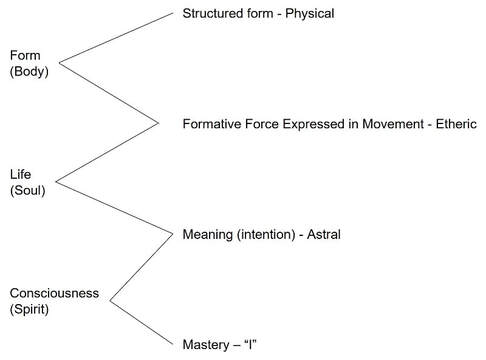
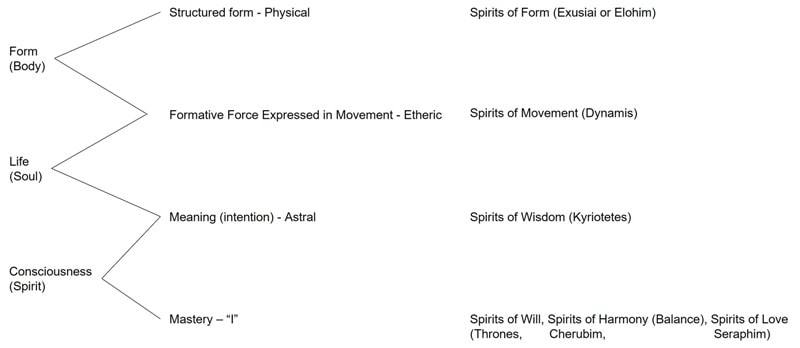
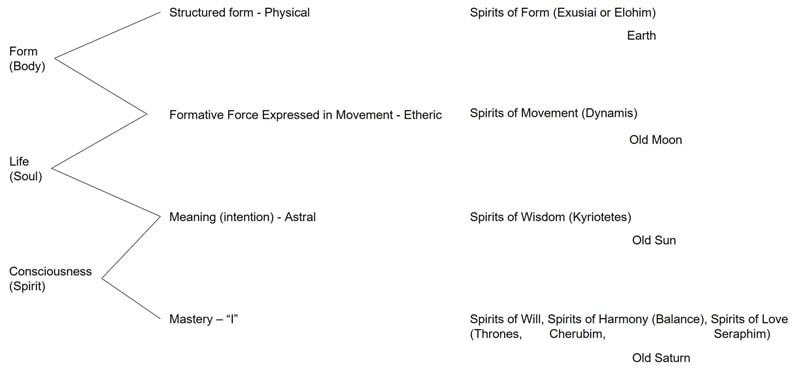
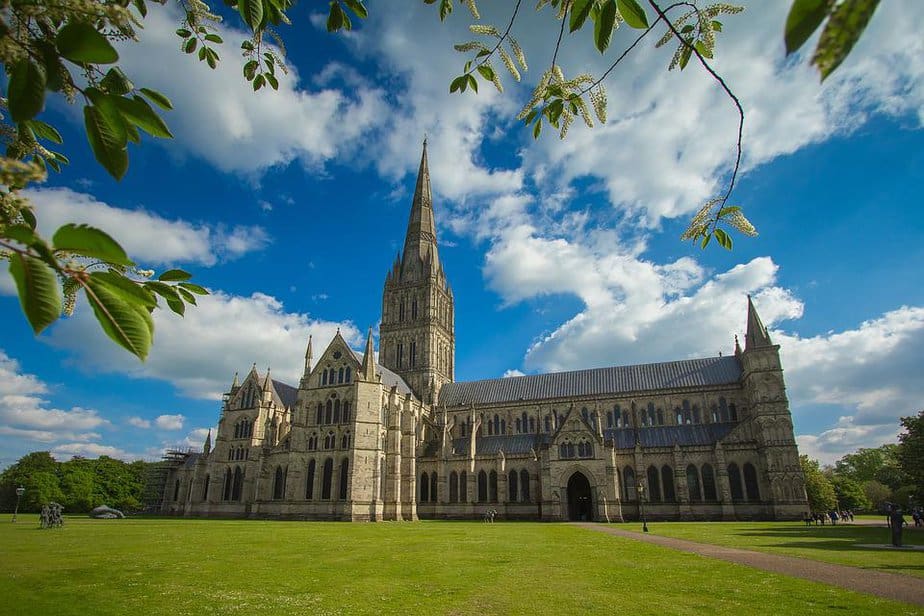
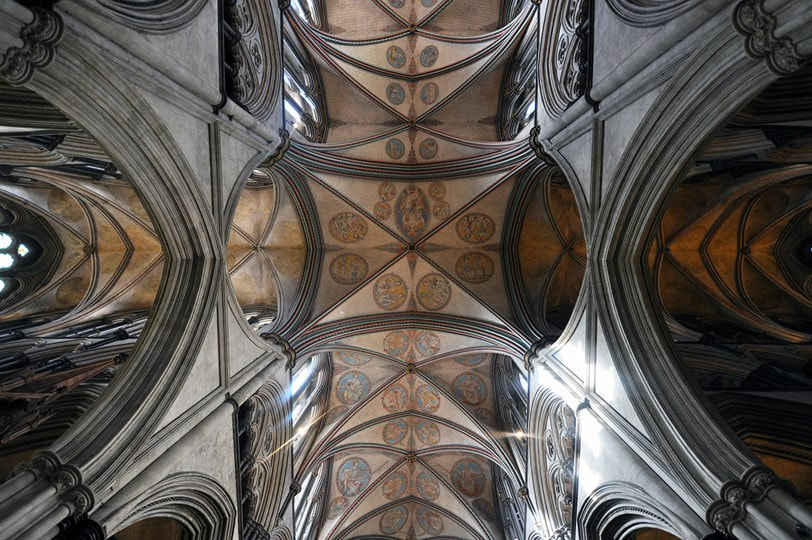
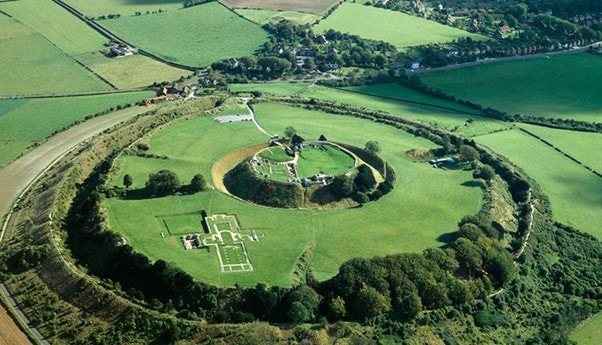
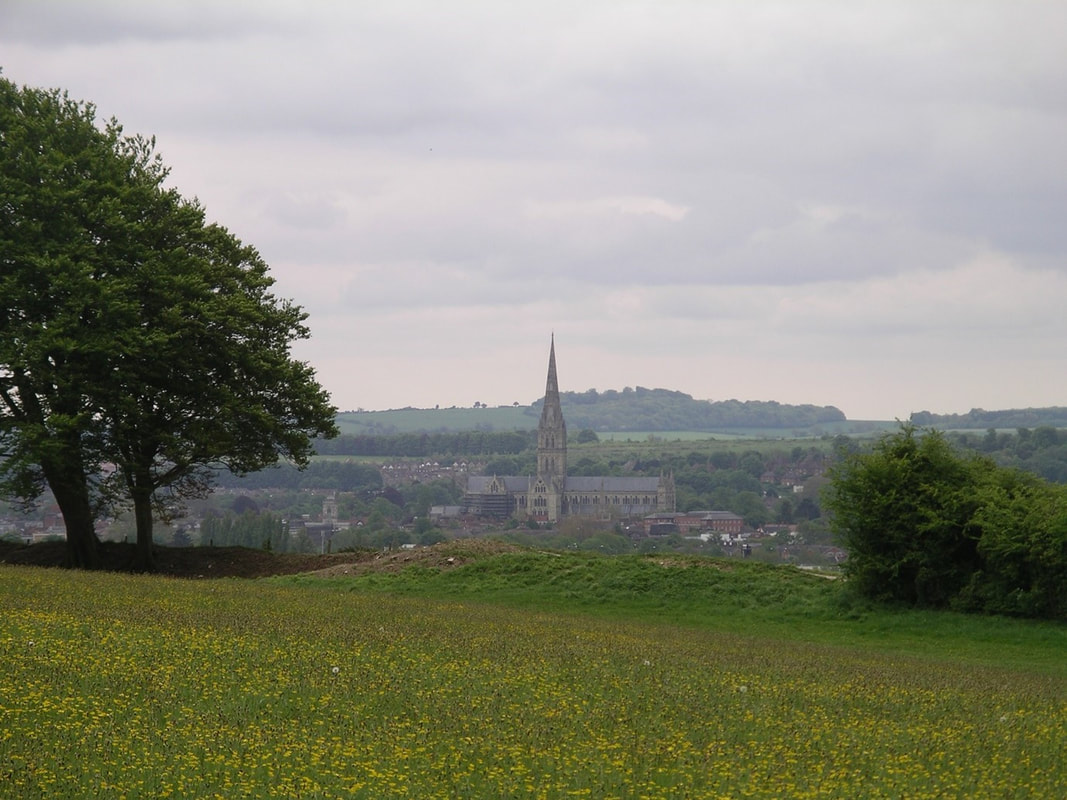
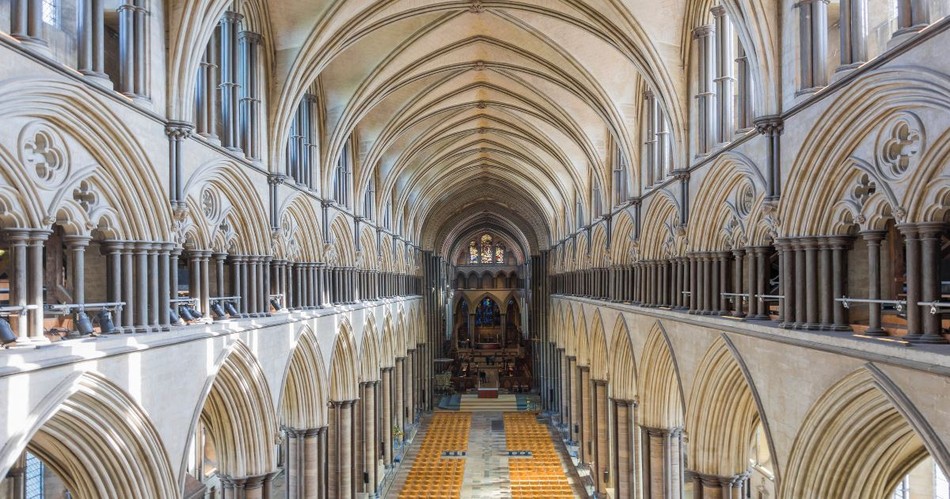

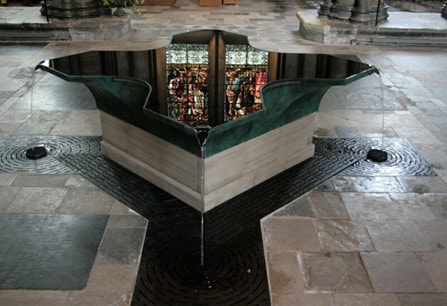
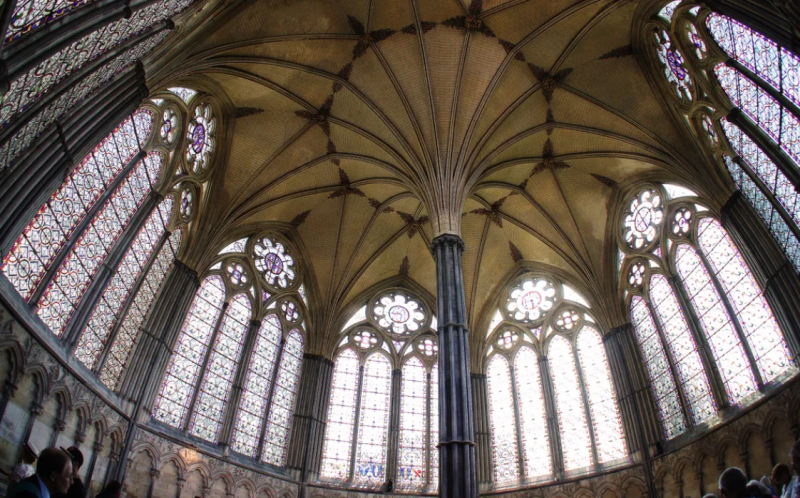
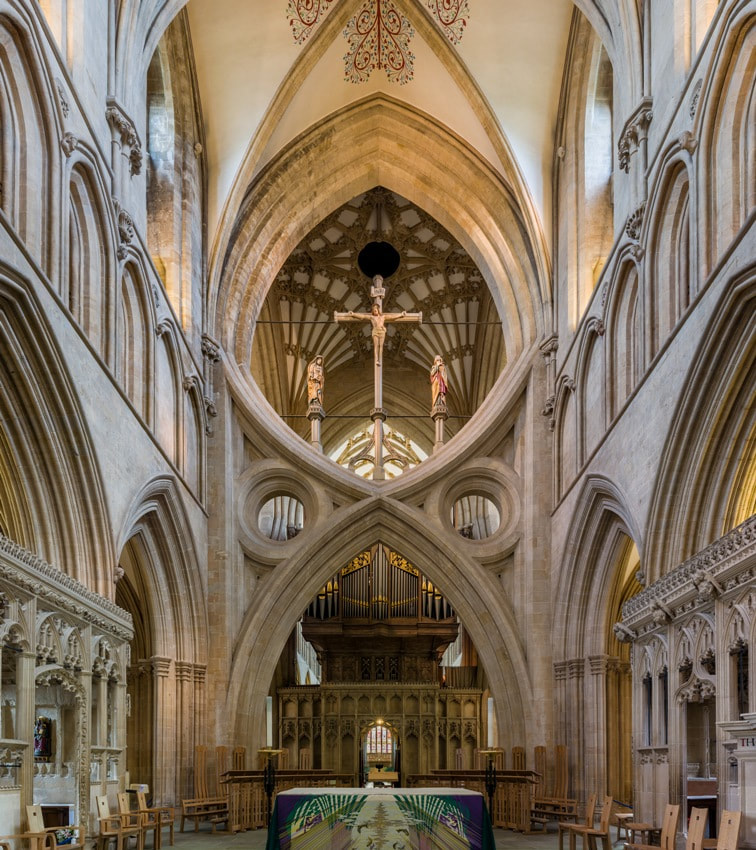
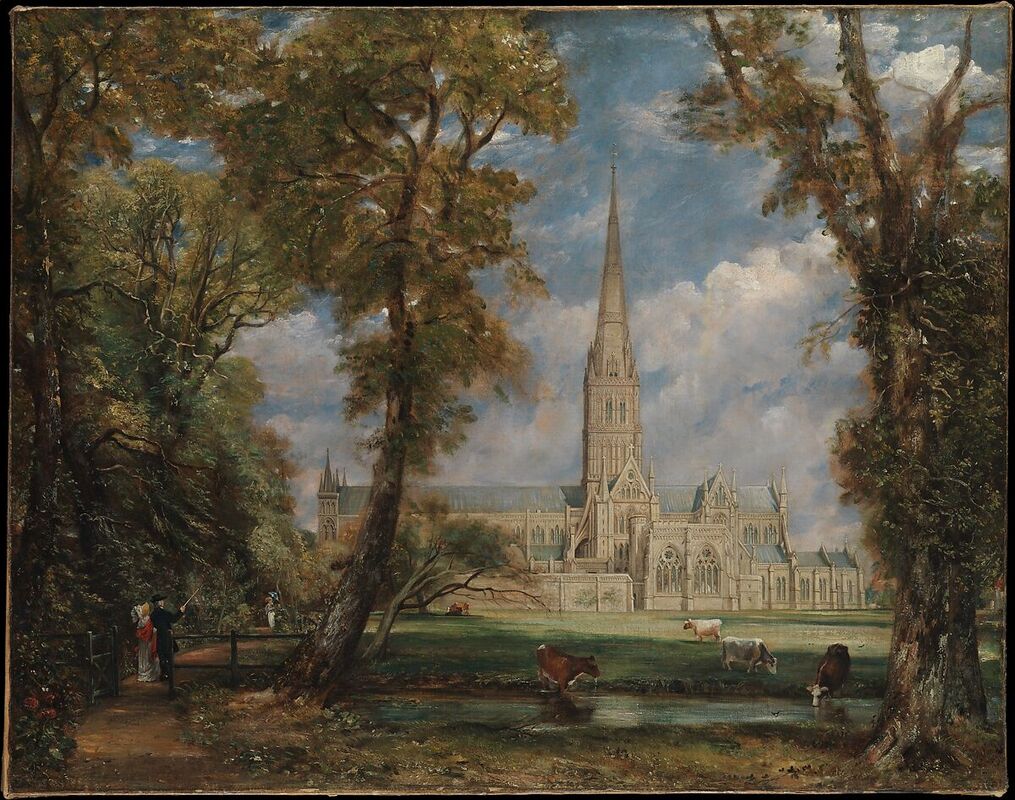

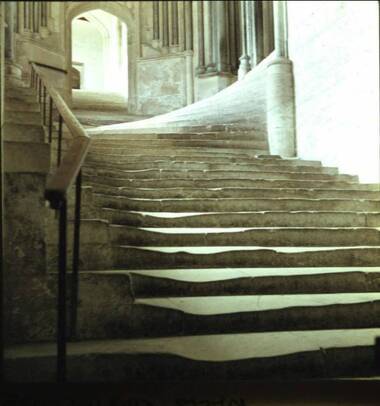
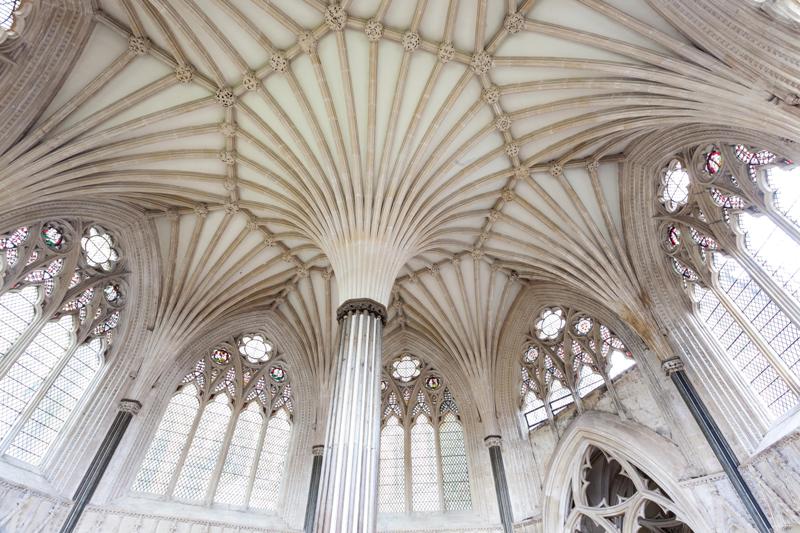
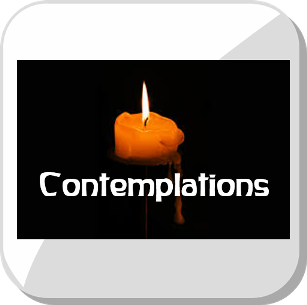
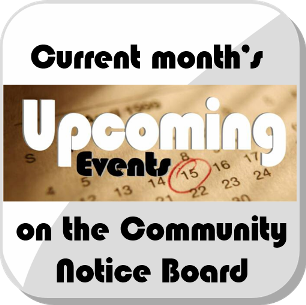
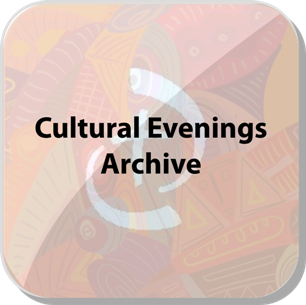
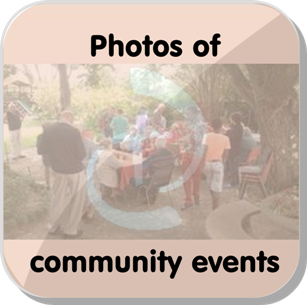
 RSS Feed
RSS Feed